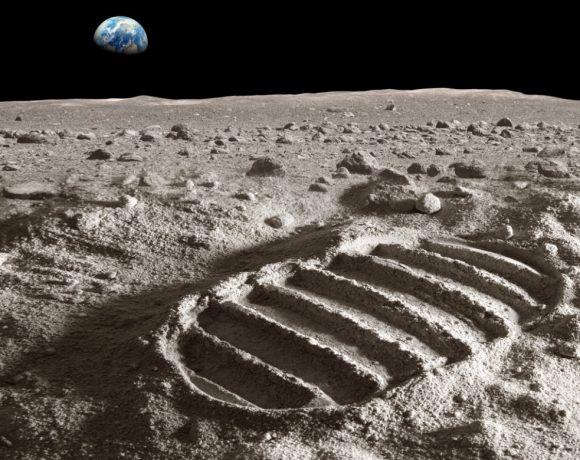- The Chinese space program has been extremely active for several years. In 2018, China sent more rockets than any other country (35) into orbit, with the USA in second place (30). In 2019, China became the first country ever to land a rover (Yutu-2) on the dark side of the moon.
- A first milestone in China’s space program reached this year is the completion of its own global navigation system on June 23, 2020 with the stationing of the last orbiter of the third generation of Beidou satellites.
- Exactly one month later, on 23 July 2020, a Long March-5B (LM-5B) successfully took off from its launch platform on Hainan Island towards Mars. The mission was named “Tianwen-1”, (“Question to the Sky”).
- The Chang’e 5 Moon exploration mission will also start in the last quarter of this year. The main goal will be the return transport of lunar rock samples.
The Chinese space program has been extremely active for several years. In 2003 China sent its first manned rocket into space, followed by 10 more taikonauts to date. Within the framework of the Chang’e (“moon goddess”) moon missions, China sent its first Rover Yutu (“moon rabbit”) to the moon in 2013. In 2017 China had the second largest space budget in the world (approx. 8.4 USD) behind the USA (43.3 USD). In 2018, China sent more rockets than any other country (35) into orbit, with the USA in second place (30). In 2019, China became the first country ever to land a rover (Yutu-2) on the dark side of the moon. The year 2020 will also be marked by three major space projects.
Beidou Satellite System
A first milestone in China’s space program reached this year is the completion of its own global navigation system on June 23, 2020. With the stationing of the last orbiter of the third generation of Beidou satellites, the Beidou Group now joins the global navigation networks GPS (America), Galileo (Europe) and GLONASS (Russia).
The Beidou programme was launched in 2000-2003 with three experimental satellites covering only China with its network. The new generations Beidou-2 (BDS-2, 2012) and Beidou-3 (BDS-3, first satellite in 2018) have extended the range to global coverage.
In addition to public security, transport, fisheries or forestry, the satellites are also used for the prevention of natural disasters and the search for missing persons. The freely available Beidou service also provides the civilian population with a navigation system comparable to GPS. According to official opinions, the system will be compatible with other navigation systems.
Tianwen-1 Mars Mission
Exactly one month later, on 23 July 2020, a Long March-5B (LM-5B) successfully took off from its launch platform on Hainan Island towards Mars. The name of the mission “Tianwen-1”, (“Question to the Sky”) was announced 2 months earlier on 24 April 2020, on the occasion of the 50th anniversary of the first Chinese satellite.
The mission was launched within a short time window from the end of July to mid-August. During this period, Mars and Earth are in an ideal position, which is repeated only every 26 months, allowing the spacecraft to use the least amount of fuel.
After a journey of 7 months, the rocket will reach Mars in February 2021, releasing the satellite in its orbit. The satellite will be equipped with a high-resolution camera similar to the HiRise camera on board of NASA’s Mars Exploration Orbiter. It will also carry a ground radar, mineral spectrometer, and magnetometer. The landing of the Lunar Module will take place a few weeks later. The solar-powered rover, weighing around 240 kg, is about twice as heavy as China’s moon rover Yutu-2 and will measure the climate and magnetic environment on Mars.
Tianwen-1 is not only China’s first independent Mars mission. It is the first attempt ever to bring a satellite, a lander and a rover to Mars at the same time. Especially the landing of a probe on Mars is one of the most difficult maneuvers in space travel and would therefore be all the more successful. Due to the ideal constellation of planets this summer, the USA (30.07.20) and the United Arab Emirates (19.07.20) also set off this summer with their respective probes towards Mars.
Chang’e-5 Moon mission
The Chang’e 5 Moon exploration mission will also start in the last quarter of this year. A mislaunch of the Long March 5 rocket in 2017 delayed an earlier start of the mission. The main goal will be the return transport of lunar rock samples. This was last undertaken by the Soviet-Union in 1976 as part of the Luna mission. The complexity of the technologies used for the transport suggest that the mission will be a test run for future manned flights to the Moon.
Even the COVID-19 crisis could not stop China from its timetable for the launch of the Beidou satellites and the Tianwen-1 mission. It remains to be seen, if the same can be said for the Chang’e 5 mission. The determination to deploy the missions on time speaks for the importance of the missions, whose possible successes might be a message of relief for China especially in the current time of challenge due to the virus.






NO COMMENT